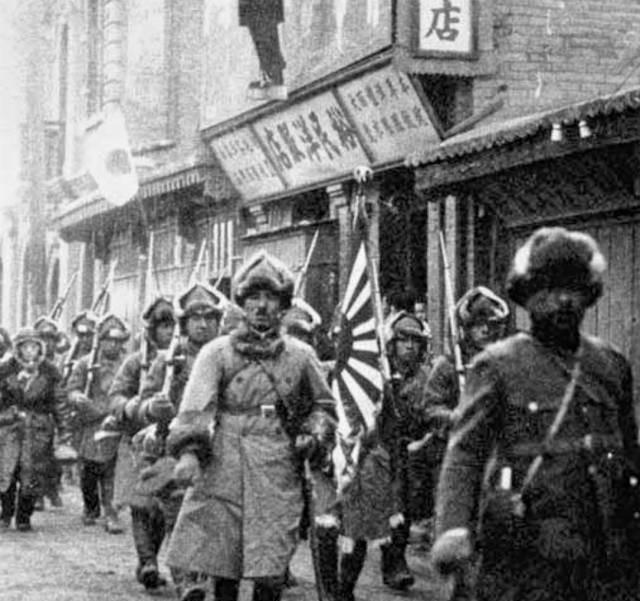First, the origin
After the Russo-Japanese War of 1905, Japan sent troops to occupy the Kwantung Prefecture (referring to the area south of the line from Pulandian to Qiziwo in the Liaodong Peninsula) and the South Manchuria Railway, which was originally "leased" by Tsarist Russia. In the following year, the Japanese Governor's Office was changed to the Governor's Mansion, under which the War Department was established, with 1 Army Division, 6 Independent Garrison Battalions, Lushun Heavy Artillery Battalion, and Gendarmerie Corps.
In 1919, the Governor's Office was abolished, the Kwantung Office was established, and the Kwantung Army was established, with the first commander, Tachibana Koichiro, whose headquarters was located in Lushun and directly subordinate to the Emperor. After entering the Showa era in 1926, Japan stepped up its continental policy of invading China and preparing for war against the Soviet Union. In 1928, the Kwantung Army created the Huanggutun Incident and killed Zhang Zuolin, the leader of the Chinese Warlord Clan.

Japanese Kwantung Army
2. The Japanese-Soviet conflict
From May to August 1939, the Japanese Kwantung Army invaded Mongolia, and the Soviet and Mongolian armies counterattacked, launching the Battle of Nomonkan, which lasted 135 days. The two sides invested more than 200,000 soldiers, more than 500 cannons, 900 aircraft, thousands of tanks and armored vehicles, and more than 60,000 deaths. The two sides ceased fire on 16 September, ending the clashes with Japan backing down and acknowledging existing borders. On June 9, 1940, the Soviet Union and Japan formally concluded an agreement. The war also forced Japan to change the national policy of "going north" to invade the Soviet Union to "going south" to attack the United States, so that the Soviet Union avoided the unfavorable situation of fighting with Germany and Japan on both fronts, and could concentrate its forces on fighting German fascism.
Soviet forces at the Battle of Nomonkan
On August 9, 1945, three months after the defeat of the German fascists, the Soviet Union officially declared war on Japan, and the Soviet Army mobilized three fronts, including 11 composite army groups, 1 tank army, 3 air force groups and 1 campaign group to attack the Japanese Kwantung Army. Soon after, the Japanese Kwantung Army ended the war with more than 83,000 killed and nearly 600,000 captured.
3. Historical facts
But is the Kwantung Army, which claims to be Japan's elite, really so vulnerable?
In the Battle of Nomonkan, according to the declassification of the soviet archives after the collapse of the Soviet Union, the Soviet army with tanks, fighter equipment and troops far above the Japanese army paid a more tragic price than the Japanese army. The famous Soviet general Zhukov commanded the Far Eastern Army of more than 70,000 people to participate in this battle, the Japanese army only had 1/7 of the Tanks, only 1/6 of the artillery, and only 1/3 of the strength of the Soviet Army.
The Red Army at the Battle of Nomonkan
However, the result of the battle was that the Soviet army killed and wounded more than 25,000 people, while the Japanese army killed and wounded more than 19,000 people, and the loss of heavy equipment such as Soviet tanks and fighters was extremely heavy, although the Soviet army won the victory, with absolute superiority in strength and equipment, it still failed to completely annihilate the 23rd Division of the Japanese Kwantung Army, so in terms of military combat effectiveness alone, the Soviet army in the same period could not be completely said to be stronger than the Japanese army.
In August 1945, the Soviet Union declared war on Japan. The combat effectiveness of the Japanese Kwantung Army was vastly different from that of the Battle of Nomonkan. In fact, since the end of 1942, the Japanese army has continuously transferred the strongest first-class divisions of the Kwantung Army to the Pacific Theater, as well as the main battlefields of North China, Central China, and South China. In January 1945, the Japanese base camp once again dispatched 13 divisions of the Kwantung Army to the Pacific Theater; in April, the U.S. Army occupied Okinawa and began air raids on the Japanese mainland, and the Japanese army transferred 7 divisions and nearly 1/3 of the strategic materials from the Kwantung Army back to the Japanese mainland to prepare for war in order to concentrate its forces on the mainland.
Japanese flag captured by the Soviets
At this time, the elite of the standing divisions of the Kwantung Army were drawn out, and in May 1945, with the surrender of Germany, Japan once again expanded the strength of the Kwantung Army, and re-recruited 250,000 japanese soldiers in the northeast, with a total strength of 24 divisions and regiments, about 700,000 people, known as millions to the outside world, but in fact, they were all elderly and minors, and the weapons and equipment were seriously insufficient, and even the equipment of the puppet army was drawn to supplement the new troops.
But even so, the Soviets did not actually gain an advantage in combat. Before the Emperor announced his surrender on August 15, the Soviet army did not capture any large and medium-sized cities, and even at one time the main Position of the Japanese Army was not even close, and the main Force of the Soviet Army was still circling with the Japanese garrison on the border.
The Japanese Kwantung Army surrendered to the Soviets
Therefore, it cannot be said that the Soviet army does not have actual combat effectiveness, nor can it be said that the Japanese Kwantung Army is vulnerable, but it can only be said that if the main force of the Soviet Army fighting against the German Army on the Western Front is compared with the Japanese Kwantung Army in its heyday, the Soviet Army may be superior, but compared with the Far East Army and the Kwantung Army at its peak, the victory or defeat cannot be said.